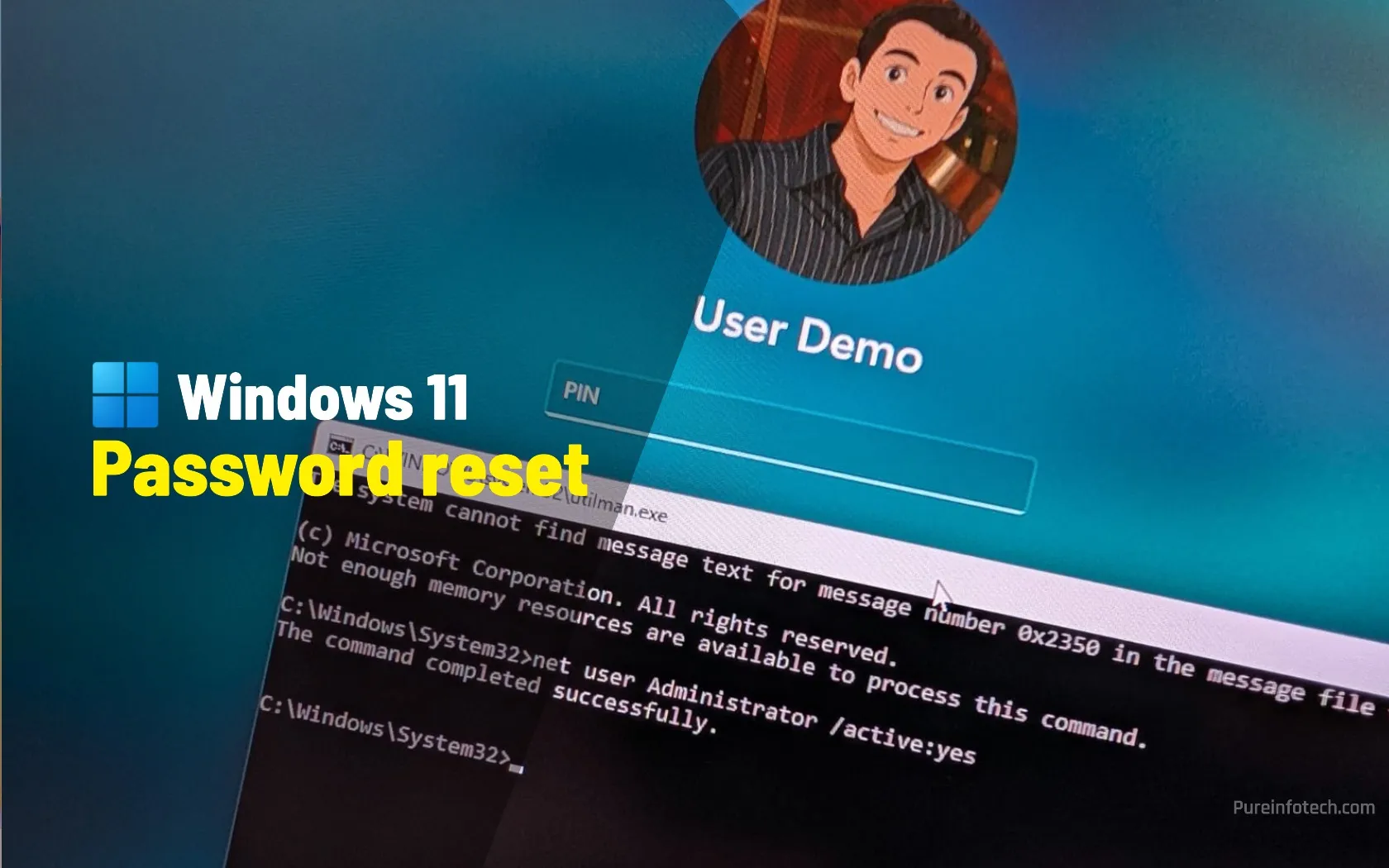How to reset account password without recovery questions on Windows 11

- To reset your Windows 11 password, boot your computer into WinRE and open Command Prompt, change “utilman.exe” to “cmd.exe,” enable the “Administrator” account, sign in with the local Administrator account, and reset your account password.
UPDATED 4/18/2025: On a Windows 11 setup configured with a local account, at one point or another, you may lose access to the desktop for many reasons, including because you may have forgotten your password. Or it could also happen that you may have deleted the only administrator account, and now you’re stuck with a standard user account that won’t let you make any system changes.
If you’re in any of these scenarios, you can use a workaround that involves renaming a couple of system files from the Windows 11 setup, which will give you access to the Command Prompt as an administrator on the Lock Screen. You can then enable the hidden “Administrator” account to regain access to your computer to reset the account password, create a new admin account, or change a specific account from Standard User to Administrator.
If you use a Microsoft account or have set up security questions for a local account, you can use these instructions to reset your password. Also, this method works on Windows 11 with a local account on installations that do not have drive encryption. If you use drive encryption (such as BitLocker), you will need the original password to access the account. Otherwise, you may lose your data.
In this guide, I’ll show you how to reset a forgotten password and recover your account on Windows 11.
Reset account password without logging in on Windows 11
To bypass the sign-in screen to reset your Windows 11 local account password, use these steps:
-
Start the computer with Windows 11 USB bootable media.
Quick note: To start your device with an installation media, you may need to change the UEFI settings. This process usually requires pressing one of the function keys (F1, F2, F3, F10, or F12), the ESC, or the Delete key. However, you should visit your PC manufacturer’s support website for more accurate instructions.
-
Use the “Shift + F10” keyboard shortcut on the Setup page to open Command Prompt.
-
Type the following command to move from the
X:Sourcesfolder to the root folder of your Windows 11 installation and press Enter:C:
In the command, I use
C:because it’s usually the drive letter used to access the hard drive after booting the device from USB, but you may need to try different drive letters to find the correct one. You can confirm the location using thedircommand. You’re in the correct location if the result shows the “Program Files” and “Windows” folders. Usually, the drive will appear with theD:letter. -
Type the following command to navigate to the System32 folder and press Enter:
Cd Windows\System32
-
Type the following commands to replace the Utility Manager button with direct access to Command Prompt from the Sign-in screen and press Enter (on each line):
ren utilman.exe utilman.exe.bak ren cmd.exe utilman.exe

-
Type the following command to restart the computer normally and press Enter:
wpeutil reboot
-
In the Sign-in screen, click the Accessibility button in the bottom-right corner to open Command Prompt.
-
Type the following command to enable the built-in Administrator account on Windows 11, and then press Enter:
net user Administrator /active:yes

-
Click the Power button in the bottom-right corner and select the Restart option.
-
In the Sign-in screen, select the Administrator account.
-
Open Start.
-
Search for Computer Management and click the top result to open the app.
-
Expand the Local Users and Groups branch.
-
Expand the Users branch.
-
(Option 1) Right-click the account, select“Set password,” and then reset the password.

-
(Option 2) Right-click the Users folder, choose New User, and create a new local account. Quick note: The account will be standard by default. To make it an administrator, open the new user’s properties page and add the “Administrators” group from the “Member Of” tab.

-
(Option 3) Right-click the account, choose the Properties option, click the “Member Of” tab, click the Add button, and add the Administrators group to make the user an administrator.

-
Sign out from the Administrator account.
-
Sign back in using the account with the new password.
-
Restart the computer using the Windows 11 USB bootable media again.
-
Use the “Shift + F10” keyboard shortcut on the Setup page to open Command Prompt.
-
Type the following command to move to the root folder of the Windows 11 installation and press Enter:
C:
-
Type the following command to navigate to the System32 folder and press Enter:
Cd Windows\System32
-
Type the following commands to replace the Utility Manager button with direct access to Command Prompt from the Sign-in screen and press Enter (on each line):
ren utilman.exe cmd.exe ren utilman.exe.bak utilman.exe

-
Type the following command to restart the computer normally and press Enter:
wpeutil reboot
Once you complete the steps, you can regain access to your Windows 11 account.
Although it’s not a requirement, you should consider disabling the default “Administrator” account from the “Properties” page using the “Computer Management” console.
Update April 18, 2025: This guide has been updated to ensure accuracy and reflect changes to the process.
Why You Can Trust Pureinfotech
The author combines expert insights with user-centric guidance, rigorously researching and testing to ensure you receive trustworthy, easy-to-follow tech guides. Review the publishing process.
Source link


